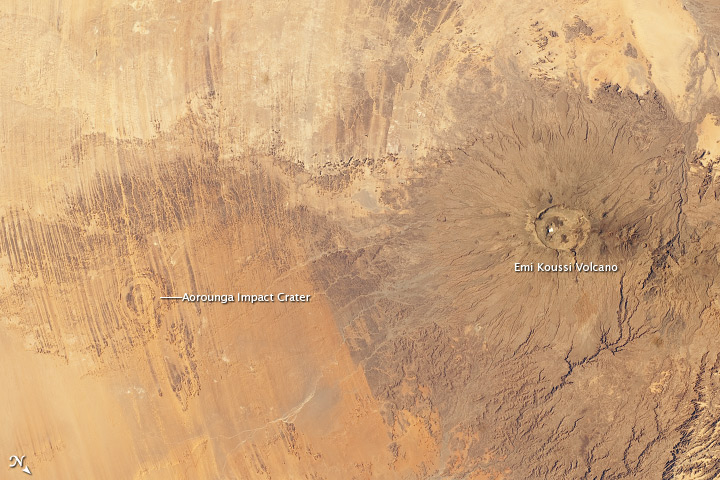
Side-by-Side Craters Formed in Very Different Ways

From NASA's Earth Observatory:
This striking photograph from the International Space Station features two examples of circular landscape features—labeled as craters—that were produced by very different geological processes.
At image right, the broad grey-green shield volcano of Emi Koussi is marked by three overlapping calderas that were formed by eruptions. The calderas form a large, oblong depression at the 3,415–meter (11,200 foot) high summit of the volcano. A smaller crater sits within the larger caldera depression. While volcanic activity has never been observed—nor mentioned in historical records—an active thermal area can be found on the southern flank.
The circular Aorounga Impact Crater lies approximately 110 kilometers (68 miles) to the southeast of Emi Koussi and has its origins in forces from above rather than below. (Note that the image is rotated so that north is at the bottom.) The Aorounga structure is thought to record a meteor impact from approximately 345 to 370 million years ago. The crater in the image may be but one of three impact craters formed by the same event; the other two are buried by sand deposits. The linear features (image lower left) that arc around Emi Koussi and overprint Aorounga and the surrounding bedrock are known as yardangs—rock ridges formed by wind erosion.
Sign up for the Live Science daily newsletter now
Get the world’s most fascinating discoveries delivered straight to your inbox.











